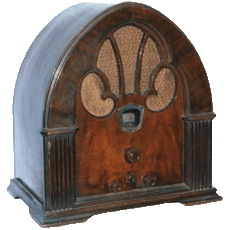Posts: 28
Threads: 10
Joined: Jul 2011
City: Roanoke, VA
Working on restoring a philco 630 first series restuffed capicators number 67 the 8-8 -10---- there is a wire from resister 70 connecting to the can on capicator 67 .i dont know what kind of wire it is but i cant get it take solder to reinstall it. doesnt seem to be a resistant wire.anybody ran into this-thanks
Posts: 7,301
Threads: 269
Joined: Dec 2009
City: Roslyn Pa
It's nichrome or resistance wire. It doesn't take to soldering very well. Most of the time it's crimped or riveted to a solderable terminal. If it's part of candohm I would just replace both sections w/two separate resistors.
https://philcoradio.com/library/download...20219B.pdf
When my pals were reading comic books
I was down in the basement in my dad's
workshop. Perusing his Sam's Photofoacts
Vol 1-50 admiring the old set and trying to
figure out what all those squiggly meant.
Circa 1966
Now I think I've got!
Terry
Posts: 16,511
Threads: 572
Joined: Oct 2011
City: Jackson
State, Province, Country: NJ
Nichrome wire can be soldered using strong acidic flux. An aspirin tablet works just fine, and this has to be uncoated (plain aspirin) one.
If you have to solder it. Otherwise, as Terry suggested, you could crimp it.
PS. Could you possibly write in a bit more structured manner, using capitals and punctuation. It makes reading a little easier. As a courtesy to fellow forum members.
People who do not drink, do not smoke, do not eat red meat will one day feel really stupid lying there and dying from nothing.
Posts: 28
Threads: 10
Joined: Jul 2011
City: Roanoke, VA
Thanks Guys.Didnt know about the aspirin as flux
Posts: 16,511
Threads: 572
Joined: Oct 2011
City: Jackson
State, Province, Country: NJ
Well, don't inhale it when fluxing, it is irritating

Get the iron hot, scrape the wire a bit (rougher surfaces are always a bit easier to tin), get a decent plob of solder at the tip of the iron, and start fluxing the wire end right agains the aspirin tablet, as it melts. Keep rubbing the tip back and forth as you flux it.
People who do not drink, do not smoke, do not eat red meat will one day feel really stupid lying there and dying from nothing.



![[-] [-]](https://philcoradio.com/phorum/images/bootbb/collapse.png)


